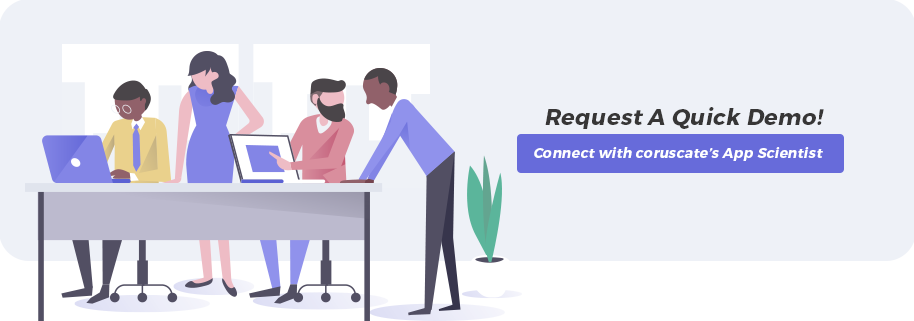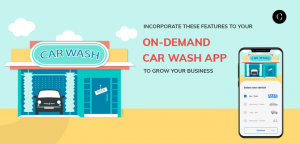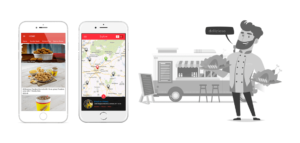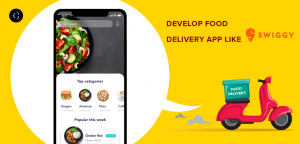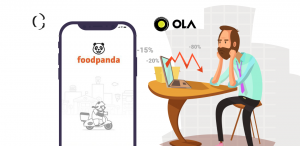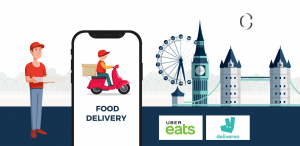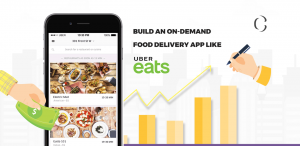Meals on Wheels: Innovative methods of food delivery service amid coronavirus; how to upgrade your food delivery app according to the latest trends

These days, we all are in the self-isolation boat and decreasing personal contact with each other in offices, markets, or restaurants, that’s why food delivery services have become crucial these days. As per the Allied Market Research [the food delivery mobile application market study], the delivery apps industry will reach $16.6 Billion in 2023, and the food delivery app industry will reach $3.7 Billion.
In recent times, the food delivery service has transformed from an auxiliary service to an essential service. One in every five smartphone users has at least one food delivery app installed on it. Even a lot of restaurants are now solely dependent on it for their business-volume and revenue. All this speaks a lot about the popularity and growing market for on-demand food delivery service. Let’s check it out the newest ordering methods in the USA since covid-19:
Food delivery platforms such as GrubHub or DoorDash, allow customers to view menus and place orders from different restaurants with no extra costs, door-step delivery. Google has also teamed up with companies like GrubHub, to allow customers to place an order directly from the Google Maps app.
Fast-food restaurants in the USA, like Shake Shack and Sheetz convenience stores have also launched their mobile apps where customers can place their orders in advance. Domino’s has also introduced ordering via text, smartwatch, Amazon Echo app, or its zero clicks required app.
Innovative ways of Food delivery in social distancing times:
Since we all know and now the WHO has predicted that this social distancing era will not end very soon, food delivery companies are already experimenting with new technological ways to deliver food in new normal via parachutes, drones, or robots to avoid direct human contacts.
Let’s have a look at how the food delivery companies are dealing with this no-contact delivery situation:
⮞ Artificial Intelligence:
Johnson-Roberson is co-founder of Refraction AI, is one of the fastest-growing startups that aim to deliver food in the tamper-proof compartment of a robot on wheels. Some big players are also entering this business, such as Amazon (Amazon Scout), Postmates, etc.
Milton Keynes (a town in the northwest of London) and George Mason University in Virginia, use the Starship Technologies Robots to fetch groceries and meals. Hungry folks in California and Denver receive their food through Kiwibot.
Johnson-Roberson’s team has designed REV-1 robots that operate in the bike and car lanes so that the bots need not use the sidewalk right of way.
In China, the delivery app Meituan Dianping has launched its autonomous delivery robots for the first time. Starship has also expanded its delivery area in Milton Keynes to offer service to the additional 180,000 people.
Kiwibot has added face masks, gloves, and hand sanitizer to its regular menu of takeout food options to ensure the safe delivery of food.
⮞ Delivery through Drones:
Delivery service through drones has begun many years ago when the Tacocopter bringing tacos to the customer in San Francisco. Burrito Bomber and trial of the Domicopter by Domino’s in the UK happened in the same period. The drones can make the deliveries within minutes, but they carry limited weight per order.
According to the recent report by Bloomberg, Alphabet’s drone delivery service, Wing is seeing a big uptick in orders of the essentials such as medicine, baby food, toilet paper, toothpaste, canned tuna, etc., in the Christiansburg, Virginia. Wing claims that the volume of deliveries has doubled amid the pandemic. The Wing has its pivot projects in Australia as well as Helsinki, Finland.
Customers place the order through an app, a drone, then receives the message to fly to a delivery facility to pick up the orders packed in a specially designed cardboard carrier. The drone, then flies to its destination at an altitude of seven meters above the ground to deliver its cargo. Then the package is lowered and automatically released through the rope. There is no human contact involved throughout the process of delivery.
Wing works with Walgreens and FedEx to deliver household essentials. Now the local bakery Mockingbird Cafe is using Wing for delivering orders. A coffee shop named Burgh Coffee has also signed up for the Wing service to deliver its cold brew.
Flytrex has also successfully launched its drone delivery service in Israel, North Dakota, and Iceland to quickly transport meals and other consumer goods to remote locations.
How you can advance your food delivery apps during the times of no-contact delivery:
⮞ Big Data:
The first and foremost thing in running any delivery business is the customer experience. Big Data helps in enhancing the customer experience in the food delivery businesses by tracking customer behavior, such as customer preferences, average orders at a particular time, complaints, etc.
Food delivery giants like Zomato, UberEats are also using big data to understand the latest trends and make necessary changes in the app or in the operations, so that the drivers, customers, and restaurants have a great experience while using their platform.
⮞ Payment through Cryptocurrency:
If you devel a food delivery app, that can make the payment using cryptocurrency, it will be a uniques feature in the future to enhance the user experience. More than that, the cryptocurrency payments are highly secure, so no fraud can happen while making the payment.
⮞ Eco-friendly packaging/Green packaging:
Today, customers are becoming more environment-conscious than ever and expect eco-friendly and zero-waste packaging.
Fast-food giant McDonald’s is already on it and will go 100% recyclable packaging by 2025. Many European delivery service giants have launched reusable cotton bags for delivery. UberEats has cut down on disposable utensils/straws.
⮞ Augmented Reality and Virtual Reality:
AR/VR helps brands to increase social engagement with their customers by uploading live videos on social media or delivery apps. It is an important aspect to look out for food delivery businesses in the coming days.
This feature is the best opportunity to increase mobile food ordering. Customers can see delicious burgers, pizza, and other foods floating into their mouths using their mobile camera.
JustEat is the best example of using AR features to promote food offerings.
Advanced features to use in the food delivery app:
⮞ Account creation:
The user accounts need to have all the essential details, should be able to accommodate multiple addresses, keep the records of the user history to make each and every account unique. As it will help in creating customized promotions and maintaining smart analytics.
The account creation has to be simple and easy for the user. You can also consider giving the users an option to create an account using credentials, like Google or Facebook.
⮞ Digitized restaurant menu:
Enlisting the restaurants is not enough, but digitizing and updating the menu, according to the prices and availability of each item is important. The restaurant-lists and menus need to be managed with a robust database, preferably cloud, as this would ensure minimal downtime as well as quick contingencies.
⮞ Search and filter option:
When customers open a food ordering app, they are mostly sure about the type of cuisine they want to have, so if you provide a search or a filter option or both, it makes the order experience efficient. The filtering can be extended to multiple aspects, such as veg/non-veg, ratings, feedback, estimated delivery time/delivery costs, availability of a dish, etc.
⮞ Payment:
You can avail users multiple payment methods, including cash on delivery, in-built wallets, credit cards/debit cards, Braintree, PayPal, or other forms of internet banking.
⮞ Live delivery tracking:
With the help of GPS and mapping/navigation tools, you can offer real-time tracking of the order delivery to the customers.
⮞ Push notifications:
You can keep the customers updated about the delivery, offers, promotions, etc. using SMS and Push Notifications.
⮞ Ratings and feedbacks:
The feedback mechanism keeps the food delivery service democratic. It helps enhance customer experience by sharing their experience and service providers can modify their services accordingly.
⮞ Offers:
The discounted coupons or other offers help service providers in retaining its customers, incentivizing the loyal customers, and delighting the new customers to use the platform.
Summing up:
Food delivery applications are much more than just a convenient tool for people to use for placing and tracking orders, it is also a powerful marketing tool for restaurants to reach new customers and ensure their loyalty.
As the food delivery businesses are mushrooming all over, the customers are becoming more demanding about getting better service and offers. Make sure your food delivery app is easy to use for placing and tracking orders, or communicating with the executives.
If you hire the right application development company, then you will be able to integrate all the best features or create a few new ones to beat the competition. Coruscate is here to help you with having immense experience of development in the same industry all over the world.
If the idea of a food delivery app business is simmering in your head, all you need to do is contact us. Our team of engineers will get back to you with a customized solution, live demo, and personalized quotations for your idea.
